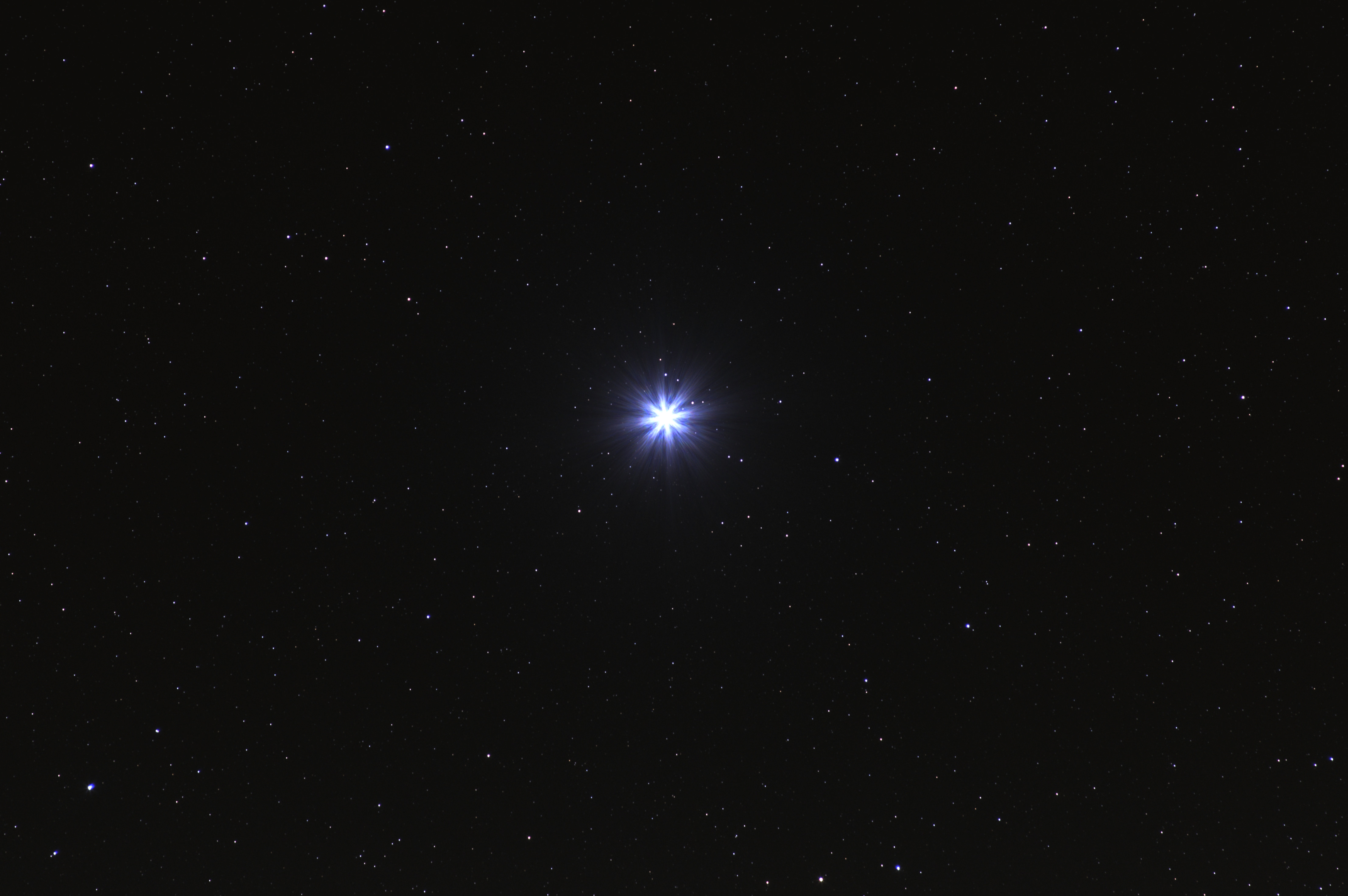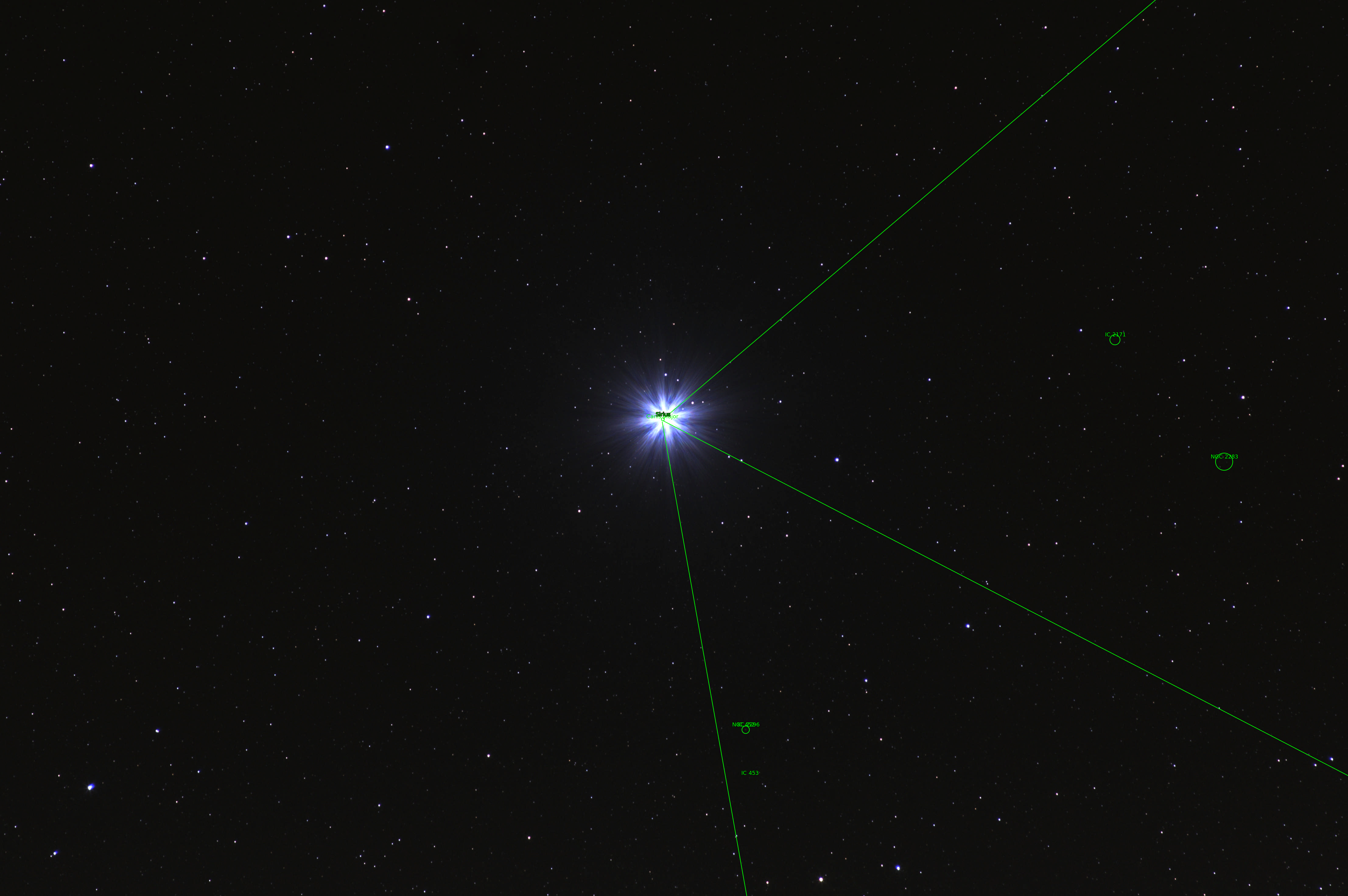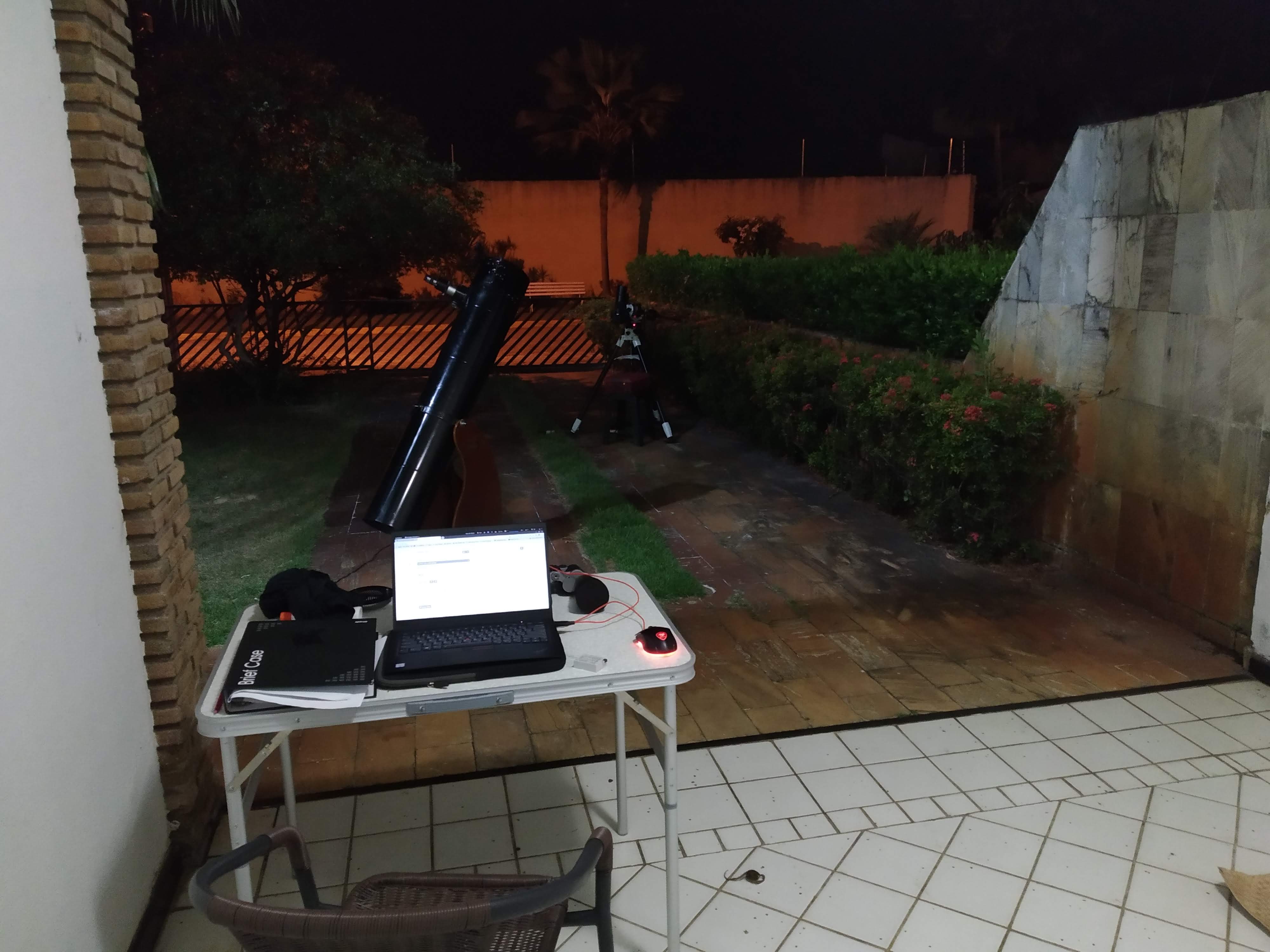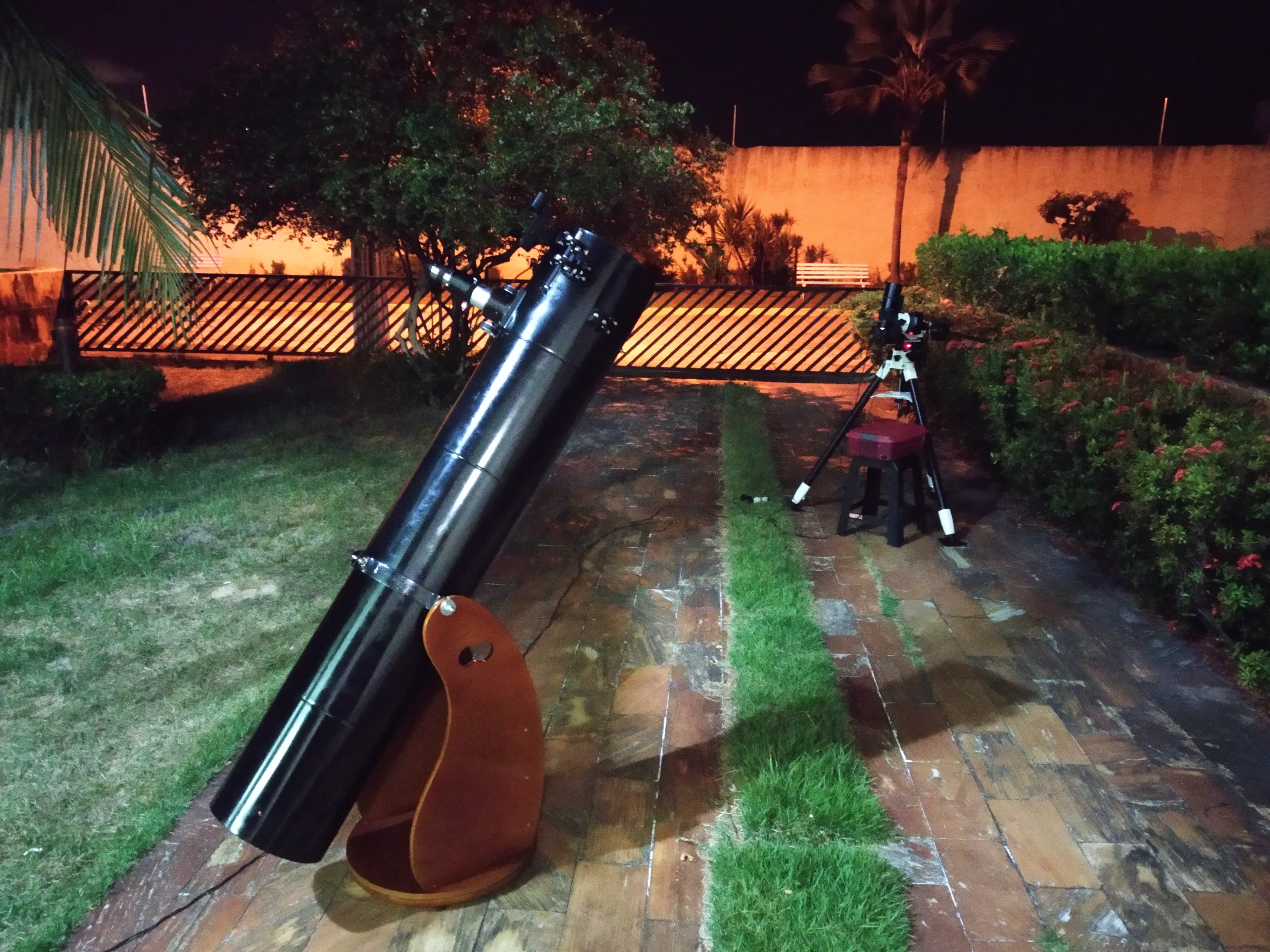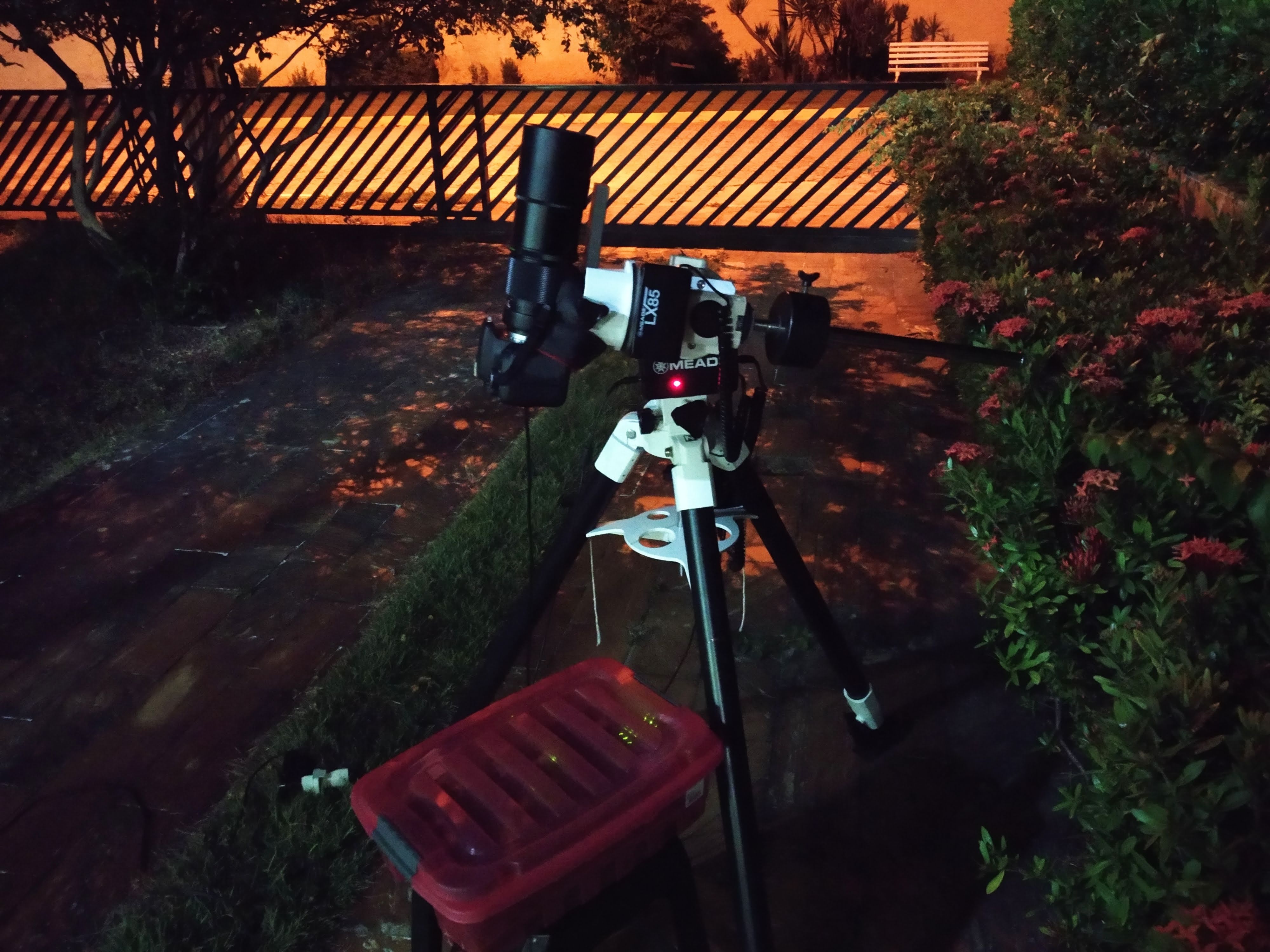Sirius with 300mm focal length on a Canon EOS 600D
A wonderful night with essentially no clouds and no Moon. For a long time I’ve been planning to image Sirius A, the brightest star of our night sky. A main sequence star on Canis Major.
I’ve set up KStars on my notebook to wireless control my camera and mount using INDI on my homebuilt science station, so I programmed the set of exposures and left it running over the night while I enjoyed other targets with my dobsonian.
Author: Fernando Schuindt
License: CC BY 4.0
Camera: Canon EOS 600D
Lens/Telescope: Lens Zuiko Olympus 300mm f/4.5 Manual-Focus OM (Film)
Composition: 42x Light Frames 28” (19.6’ total) ISO 800 f/8, 25x Dark, 25x Flat, 25x Bias
Processing: Stacking with DeepSky Stacker, Photoshop Levels adjustments and Camera Raw Filter
Location Name: Aracaju - Sergipe, Brazil
Bortle Scale: 7
Location Aprox. Coordinates: 10°58’31.0”S 37°04’26.0”W
Timestamp (Local Time): From 11-23-2020 00:00:00 to 11-23-2020 00:33:10
Timezone: UTC-3 (No daylight saving time)
Outdoor temp.: 26° C
Outdoor humidity: 96%
Theme: Sirius
Center (RA, hms): 06h 45m 28.570s
Center (Dec, dms): -16° 44’ 31.236”
Legacy Surveys sky browser: Click here
Other Gear: Meade LX85 GEM unguided (Two-star alignment), OM-EOS adapter, homebuilt INDI wireless control station, KStars connected to INDI running on a Manjaro Linux x86 notebook.
Astrometry: http://nova.astrometry.net/user_images/4171943#annotated
Backup Images (On Google Photos): https://photos.app.goo.gl/c2LqFysiHfPPEwbs7
(Click to zoom)
